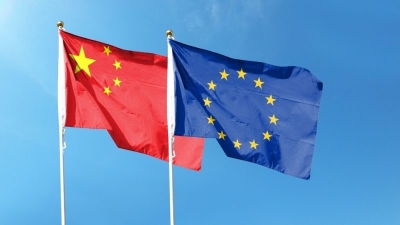Moscow’s playbook in Karabakh
Situated at the crossroads between the Islamic Republic of Iran and the Russian Federation, the Caucasus region is heavily influenced by these two regional superpowers — writes James Wilson.
The US Secretary of State Antony Blinken hosted talks between the Armenian and Azerbaijani Foreign Ministers last week, intending to broker a lasting peace treaty between these two clashing countries. Many attempts to put the Armenian-Azerbaijani conflict to rest have been made over the years, but this is the first time that US officials have taken an active part in the negotiations. It should come as no surprise that Blinken’s decision to take a much more active part in the talks comes as a result of the increasing influence of other regional powers on the parties involved. This foreign influence also happens to have a distinct anti-Azerbaijani bias, as both Moscow and Tehran hold much against Baku.
A focal point in the dispute between Azerbaijan and Armenia is the Armenian-populated separatist exclave in the UN recognised territory of Azerbaijan, in the region of Karabakh. Since the 2020 war fought by Azerbaijan against Armenia over the Karabakh enclave, Russian peacekeepers have been deployed to the area to keep the peace and ensure the passage of goods from Armenia to the Karabakh Armenians and vice versa. But, the Russian forces on the ground soon found themselves pursuing different objectives than the ones stated in their official deployment.
Considering Russia’s previous, and still ongoing, conflicts regarding puppet territories in many different parts of the former Soviet Union, such as Abkhazia, South Ossetia and Donbass, Moscow is continuing according to the same playbook. Karabakh provides a fitting target for such an operation. Moscow already has a significant military presence in the region, under the guise of peacekeeping (and military bases in close proximity), and the population is vastly different from that of land owners.
Armenia itself is a close ally of both Russia and Iran, despite the large diaspora living in Western countries, especially in the US and in France. A recent report by The Guardian shows that Iranian drones of many types made their way into Russia using boats and Iranian state-owned airlines. An article by EU Reporter corroborates this, adding that Armenia plays an integral part in these deliveries, allowing Iranian cargo planes to land in its airports before proceeding to deliver weapons to the Russian forces in Ukraine. According to the Berlin-based «German Centre for the South Caucasus» Armenia is used by Russia as a proxy for imports to and exports from Russia.
At the same time Armenia tries to present itself as the «bastion of democracy in the Caucasus», calling through its English-language outlets to the West and international organisations to take practical steps to help them to fight against dictatorial Azerbaijan.
AdvertisementBut Armenia still remains a «textbook case of Eastern type autocracy, thinly covered with a veneer of modern values and civilisation», as the Romanian Newsweek edition puts it, bringing numerous proofs of alarming examples of oppression and tyranny.
So while Yerevan tries to chum up to the West, yet its actions show where Yerevan’s allegiance truly lies. Whether current negotiations with Azerbaijan lead to any results, one should remain doubtful about their serious implementation because of the precedent Armenia has set for itself — siding with Russia and Iran on many issues.
Here is one more recent example. Iranian officials have, more than once, declared how important their relations with Armenia are, claiming its territorial integrity and security are as crucial to Iran as Iran’s own. In late April flyers and leaflets appeared on residential and administrative buildings in Yerevan, including its central Republic Square, with a very clear message — images depicting the burning of Ukrainian, Israeli and Azerbaijani flags and the message in Armenian and Persian language “we have a common enemy”.
On 23rd April, during a torchlight procession in Yerevan marking the 108th anniversary of the Armenian genocide, an Azerbaijani flag was burned alongside the Turkish flag. A few days prior, on 14th April, Aram Nikolyan, an employee of the public TV of Armenia, snatched the Azerbaijani flag at the opening ceremony of the European Weightlifting Championship in Yerevan and burned it. Such evidence of the attitude in Armenia towards Azerbaijan and how the government doesn’t lift a finger to curb these open hostilities, raises doubts about the sincerity of negotiations between Armenia and Azerbaijan.
Whilst I was writing this article, I have come to learn that the Armenian Prime Minister Nikol Pashinyan plans to visit Moscow next week. Apparently he needs to report something to the Kremlin...
Share this article:



